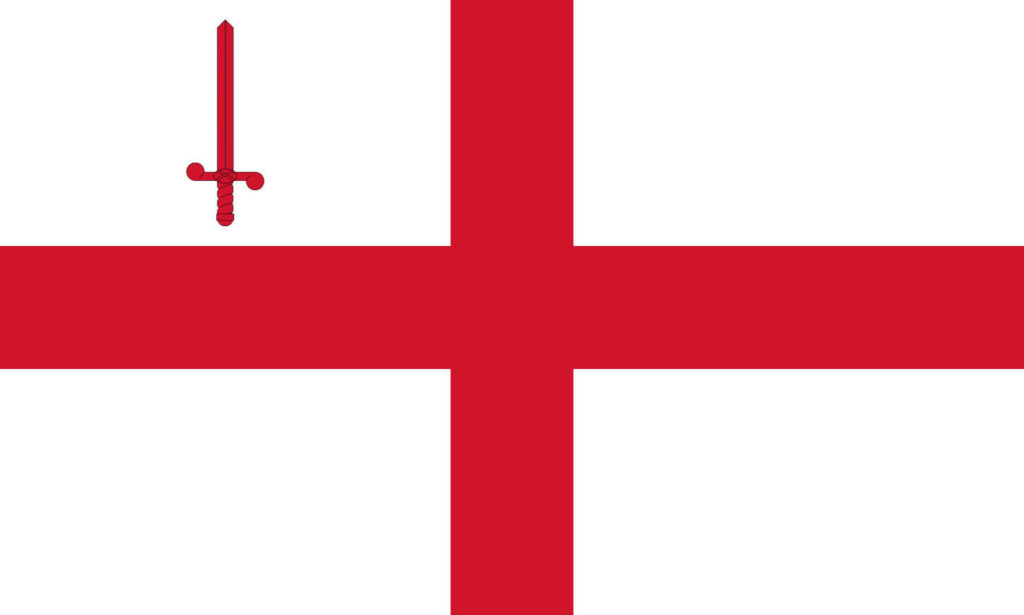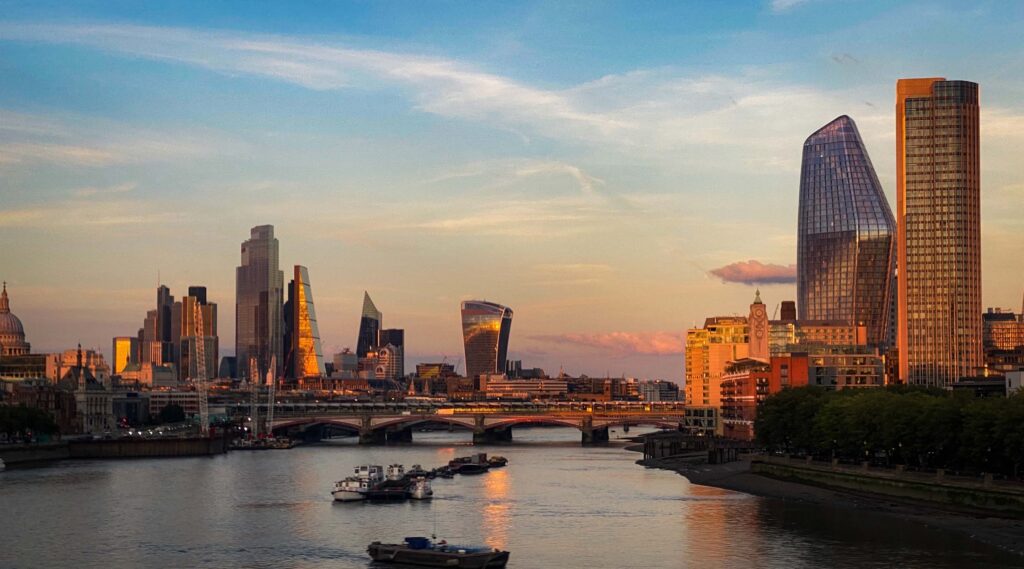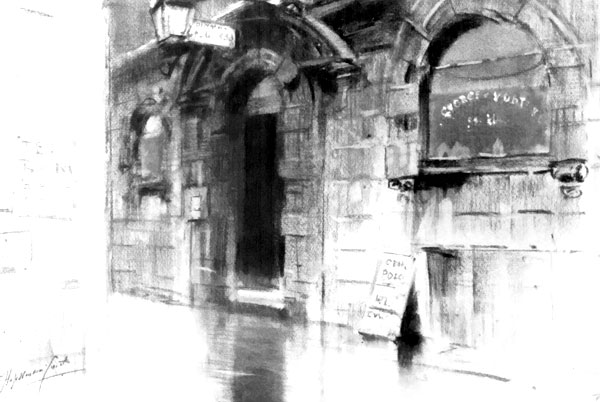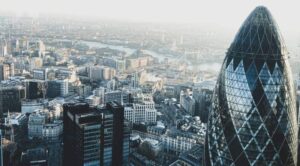The Ultimate Guide of The City of London
Date post added: 17th November 2022
Home to some of London’s top attractions, both modern and historic, The City of London is the oldest part of the English capital and the richest borough in the United Kingdom today. A truly unique place that throughout hundreds of years has preserved its character, ancient rights and economic liberties, today the City of London is known to many as the ‘Square Mile’ and as the business centre of the country.
What makes the City of London truly unique is its peculiar status and arrangement: its own ancient unit of government, with laws, rights and ceremonials different from anywhere else in Great Britain. Did you know, for example, that the King has to stop at the edge of The City of London to be welcomed in by the Lord Mayor?
In this insider’s guide to The City of London, the experts from London Walks reveal the unmissable sights and the hidden gems of the extraordinary City within London. Let’s explore!
City of London History

The Romans established the settlement of Londinium in 47 AD as a trading post that became the capital of Roman Britain and an important commercial centre. As the town grew into an essential port and crossing point over the Thames, the Romans built a defensive wall, which is known as the London Wall.
This Roman Wall has played a key role in history because the City fought for hundreds of years to keep its original boundaries, rights and privileges within it. For the first 1,000 years of its existence the Fleet River and the Roman Wall – which ran along the the east bank, formed the western boundary of the City.
After the Romans, Londinium came under Anglo-Saxon rule. It is believed they had a settlement about one mile away, stretching from the Strand in Covent Garden to the area where the National Gallery is today. Anglo-Saxon England was divided into small kingdoms, with London coming under the Kingdoms of Essex, Mercia, and Wessex. They endured numerous Viking attacks and occupations until the Norman conquest.
Under the Normans, the City of London expands over the Roman Wall, bursting those old Roman western boundaries over the Fleet River in a westerly direction to what is today Fleet Street. Temple Bar, a stand alone gate, becomes the western boundary. This area has been known as ‘Alsatia’, like the area in Europe where France meets Germany as it’s where London (the City) meets Westminster.
The City became the headquarter of the powerful merchants and guilds, and in 1075 it was given a special charter of rights and privileges by William the Conqueror who could not get across London Bridge. In exchange for recognising him as King of England, the City of London struck a financial deal to keep its liberties.
This historic event started the thousand-year long tradition of monarchs accepting the City of London as a unique place, governed by its own body and laws, while simultaneously keeping a close eye on it. The Tower of London was built right outside its walls, and a new capital, Westminster, was established nearby. Outside the London Wall, nearby towns grew and merged, eventually becoming known collectively as London. Nonetheless, The City kept its privileges to modern times.
The modern-day City is run by The Corporation, Britain’s oldest local government, and has its own city hall, its own Mayor called the Lord Mayor of London, its own police force, its own laws, flag and coat of arms.
The City of London Corporation acts in the interest of the financial services industry and its residents. Its decision making structure includes the office of Remembrancer, the Court of Aldermen, the Lord Mayor and the Court of Common Council. See more details on their official website: cityoflondon.gov.uk.
In addition, the City of London is one of the most important and internationally successful financial centres in the world. The London Stock Exchange was formed in 1801, and today it is one of the largest in the world, with the likes of New York Stock Exchange, NASDAQ, Hong Kong Exchange and more. It may not come as a surprise to know that many are left wondering what kind of effects Brexit and the coronavirus pandemic will have on the City of London’s financial future. The real estate market has reacted for one. Property prices showed a low increase (6%) compared to other European cities (Paris 20%, Amsterdam 40%).
Is The City of London a country?
The City of London is not a country. Technically it has the status of a county and geographically it belongs to the county of Middlesex but it has powers that exceed those of any county of London or the U.K.
Who owns the City of London?
The biggest landowner of the Square Mile is The City Corporation, the local authority that runs ‘The City’. The Corporation owns landmarks including Guildhall, the Monument, Mansion House, The Millennium Bridge, Spitalfields Market and Leadenhall Market. Their land portfolio has been built over hundreds of years but historically both Church and State have also owned part of the City. The Church owns St Paul’s Cathedral and at least 14 Churches and The Bank of England is owned by the British Government.
Particularly since World War II, the City has attracted both British and overseas investment. Land Securities (Landsec), the biggest British developer, owns the relatively new shopping mall at One New Change whilst Chinese Companies own The Lloyds Building (Ping An), the ‘Cheesegrater’ (CC Land) and the Walkie Talkie Building (Lee Kum Kee). Other overseas land owners include both countries and individuals – the famous Gherkin building was bought by the Brazilian billionaire Joseph Safra for the Safra Group.
What is the difference between London and the City of London?
The City of London is a City within London. When people talk about London they are likely to be referring to the whole of the UK’s Capital city that comprises 32 individual councils known as boroughs AND The City of London (all 607 square miles). The whole of London, referred to as Greater London, also includes another City – Westminster, home to Parliament and Buckingham Palace. It’s administered by the Greater London Authority (GLA) that takes a strategic remit for the whole area. It has an elected Assembly, an elected ‘Mayor of London’ and meets at City Hall, right next to Tower Bridge. Independents stand and political parties field candidates every four years for GLA elections.
Where is the City of London and how big is it?
It is on the north bank of the River Thames, east of the City of Westminster and west of Docklands and Canary Wharf. It covers an area of 1.12 square miles. The ‘Square Mlle’ has remained more or less the same size for 2000 years since Roman London and did not expand in the Middle Ages, nor after the Great Fire of London destroyed most of it in 1666. Its boundary roads are marked by a heraldic dragon, the most famous of which is on Fleet Street at Temple Bar.
It has 44 churches, 1 fire station, 1 hospital (St Bartholomew’s), 6 schools and ~150 public parks, albeit some are known as pocket parks as they are so tiny. There 110 trade guilds (livery companies) that have 40 livery halls inside the city.
There are 42 miles of streets in the City but only half a road, figure that one out!
Does the City of London have its own laws?
The City of London, that unique square mile within Greater London, is its own entity with special status. It has its own government, mayor and police force; its own laws, flag and coat of arms.
The City of London Corporation looks after and promotes the City. It’s headed up by the Lord Mayor with the Court of Common Council. The City of London’s government actually pre-dates Parliament as Britain’s oldest local government.
The City of London Corporation acts in the interest of the financial services industry and its residents. Its decision making structure includes the office of Remembrance, the Court of Aldermen, as well as the Lord Mayor and the Court of Common Council. See more details on their official website: cityoflondon.gov.uk.
Which buildings are in the City of London?
The City of London is home to historical landmarks whilst being a vibrant modern city. Part of its character is the way in which it mixes old and new, traditional and contemporary. As you walk its streets, look up to take in the details of its modern architecture alongside its centuries-old buildings. There are too many to mention, but our top ten would include:
- The Gherkin
- The Cheesegrater
- The Scalpel
- The Walkie Talkie Building
- Lloyds and Heron Tower
- St Paul’s Cathedral
- Guildhall
- Barbican
- Monument
- Mansion House
Top sights in the City of London
Historical sites usually open to the public include
- St Paul’s Cathedral
- The Bank of England Museum
- Leadenhall Market
- The Museum of London
- Guildhall
- Barbican
- Monument
- The Royal Exchange
- Spitalfields
St Paul’s Cathedral
St Paul’s Cathedral is a truly special place. The burial place of military heroes, it is where Britain as a nation comes to commemorate and celebrate.
Visitors cannot help but be drawn into this imposing edifice, to journey along its harmonious nave and to gaze up in awe at the symmetry and majesty of its jaw-dropping dome. History is written here in the stone and this building has born witness to the funerals of great leaders, showcased a fairytale royal wedding and served as a symbol of resistance during the Blitz.
St Paul’s is a living, working church that embodies the story of a nation.
Explore St. Paul’s Cathedral on our walking tour with award-winning guides.
Leadenhall Market
Nestled between skyscrapers of glass and steel is a gem of crimson and gold, Leadenhall Market, where city folk flock at lunchtime and after work.
This beautiful, covered market is a masterpiece of Victorian architecture, whose cobbled streets sit above the old Roman basilica, in the heart of our historic city.
It also provided the perfect setting for Diagon Alley in Harry Potter and the Philosophers Stone and you may even come across the entrance to the Leaky Cauldron!
The famous names connected to the City throughout history
Samuel Pepys, the diarist was born and lived there, Charles Dickens worked there, William Wallace was executed there and Samuel Johnson compiled his famous diary there. The City is riddled with narrow medieval streets and alleyways to explore where once Coffee Houses were the forerunners of Exchanges. The Bloomberg HQ displays archaeological discoveries whilst Bow Lane is 2000 years old. London Walks offers themed walks including The Famous Square Mile, Jewish London, The Blitz, Slavery and Crime and Punishment.
Not to forget, Jack the Ripper also leaves his bloody mark on the City of London. One of his murders was committed in the City of London police territory, which has its own police force. The Ripper was moving back and forth across the boundary between the Metropolitan and City of London territory. The two police forces never cooperated or worked together, one important factor as to why he was never caught.
Where to eat in the City of London
- Polo Bar
Polo on Bishopsgate opposite Liverpool St Station is an institution. During our first lockdown in 2020, they couldn’t close until they had fitted a door, being open 24 hours a day they had never needed one before. A very traditional café, they serve great breakfasts, from full English to pancakes, and a host of other comforting foods. Slide into one of their banquettes and relax with a proper cup of tea or a cocktail and good grub.
2. Café Piccolo
A classic caff as used by cabbies in Grehsam St. Its seating, downstairs, is truly piccolo – tiny. But in the summer there’s plenty of outdoor space nearby. With massive portions of pasta and stuffed sandwich baps, there’s plenty of choices at Piccolo. Join the steady stream of London cab drivers to eat here for decent food reasonably priced.
3. Simpson’s Chophouse
Tucked away down an alley at 38 ½ Cornhill, Simpson’s Chophouse has been in business since the mid 18th Century. The brass rail above the long wooden tables is to hold your top hat. Order something meaty, end with stewed cheese, and imagine you’re dining with Charles Dickens.
Dine in the Edwardian splendour of what was once the banking hall of the Midland Bank, with walnut counters, marble floors and elegant lighting. The Ned, named after the bank’s architect Edwin Lutyens – Ned to his friends – has 8 different restaurants and cafes serving food from around the world.
If the food of London piques your interest, check out our guided food tours to discover some of the capital’s true hidden gems.
Discover off the beaten track gems
George & Vulture
Amidst the warren of alleyways between Lombard Street and Cornhill, tucked away in Castle Court, in the heart of the City of London, lies the George & Vulture restaurant.
From its earliest beginnings on this site in the 12th Century, the George & Vulture has been an important part of the City’s rich history. In the second half of the 17th Century, these alleyways were full of coffee houses, taverns and traditional “chop houses”. Like the George & Vulture they offered cheap, meaty and plentiful food so that men who were wheeling and dealing all day long in the coffee houses could be eating, drinking and socialising in the evening.
Come here in the 1730s and you would have heard a loud racket spilling out into the Alleyways. Shrieks of laughter, drunken singing and pleasurable moans, all emerging from the George & Vulture. Why? Because this was where London’s notorious Hellfire Club met. And those meetings, where nothing was off-limits, could last a whole week or more!
And in the 1830s you would have seen Charles Dickens sitting at a table here, writing or talking to his friends. He frequently drank and ate at the George & Vulture, and the place was mentioned many times in his first novel, the Pickwick Papers. In fact, the City Pickwick Club still meets and dines here in his honour, as it has done so for over 100 years.
Today, the George & Vulture is a traditional English restaurant serving excellent food. And its historic surroundings let you step back in time.
Churches in the City of London
The City has 47 churches within one square mile, many of them masterpieces of 17th century architect Sir Christopher Wren. Here Londoners have worshipped for centuries. The churches are often tucked into a corner, overlooked by 20th century offices, and each has a different spire. All have memorials to long gone locals, marvellous furnishings, a sense of history.
The Guild Church of St Mary Aldermar has a wonderful gothic ceiling, a window commemorating the Blitz, a memorial to a 19th century hero firefighter, an elaborate sword rest for the Lord Mayor’s sword and a pulpit carved by Wren’s finest craftsmen. Add to your pleasure by having a coffee in the church café.
Livery companies
What do the Fishmongers, the Apothecaries, the Drapers, the Goldsmiths and the Innkeepers have in common? They, and many others, are all City livery companies, descendants of the old medieval guilds. Walking along the streets of the City, you will often pass one of their halls. Some trades have disappeared but the Fan Makers and the Salters have found 21st Century equivalents to support.
The Mercers traded inexpensive fabrics, silks and velvets, which made them the premier livery company in the City. You can find their emblem, the Mercers’ Maid, on the many buildings they own around Central London. Dick Whittington and his father were both Mercers, as was Winston Churchill.
Where to find the best views of the City of London
There are good views from:
- The outside galleries at St Paul’s Cathedral especially the Golden Gallery. It is included in the visit ticket price.
- The Sixth floor viewing area of One New Change. It is free, but sometimes the venue is used for private functions.
- Monument. 311 steps, there’s a visit charge.
- The Sky Garden in the Walkie-Talkie Building. It’s free but bookable online.
- Tower 42 at Vertigo. A bar with a view.
- The Garden at 120. This is the free roof terrace at the Gherkin.
Selection of guided tours of the City of London
St. Paul’s
On this City of London walking tour, you will be shown where to look and what to look for to understand the stories that are hiding behind this stunning monument.
1. Sir Christopher Wren’s masterpiece, St. Paul’s Cathedral, is to the City of London what Westminster Abbey is to Westminster.
2. All of St. Paul’s speaks individually and collectively at once.
3. “We see nothing till we truly understand it” – John Constable.
4. “No way I’m going in there without a great guide” – your good self
The Famous Square Mile
Guided by Tom MBE, Judy, Fiona or Simon, our Square Mile walk chronicles the 2,000 years of history, mysteries and enchanting stories of the City of London. From Londinium, to the stronghold of powerful guilds and merchants, to the financial centre that is today, discover the secrets and stories of The Famous Square Mile.
The Ancient City at Night
The behind-the-scenes city walk taking the less traveled route to explore the hidden courtyards, dimly lit alleyways and wonderful old pubs in the oldest part of London. Let’s journey right down into the depths of London’s ancient past! Your guide is Peter, whose love for architecture, history and stories of London’s past won’t leave you unimpressed.
How the City Got Rich
As per the name on the tin, Blue Badge guides Mary B. and David P. are the ones taking reins of this tour detailing how London became much richer than any other European or global city. Book this walk to discover why people have always thought of the streets of London as ‘paved with gold’. Your expert tour guides help piece it together and learn how thanks to merchant shipping, monarchy, Methodism, Mercers and much more, The City got rich.
Jack the Ripper walking tour
Not your typical sightseeing tour, this is for fans of gruesome true crime history. Follow the footsteps of the notorious criminal, Jack the Ripper. Explore the alleyways and dark streets of Whitechapel and Spitalfields. Tower Hill underground station is the meeting point for this walking tour where you’ll gain insights into some of the nastiest crimes in London’s history.
The City Churches Tour
Rick is the go-to London guide when it comes to churches, their architects, history, and the people who lived and attended these wonderful buildings. Visit the non-Wren churches St Giles Cripplegate with links to Shakespeare, Milton, Cromwell and Bunyan and Hawksmoor’s St Mary Woolnoth with links to TS Eliot and Revd John Newton, slaver turned abolitionist and author of Amazing Grace. The tour occasionally includes a musical organ performance!
Revolting London – 2000 years of rebellion and retribution
This tour takes you from Boudicca (Boadacea), who put London to the torch 2000 years ago (the first Great Fire of London) to the Extinction Rebellion who recently (2019) “torched” the Chancellor’s Mansion House speech. Over two hours we’ll meet a number of extraordinary characters whose lives and deaths are etched on, above and beneath the streets and alleys of London.
Jewish London
The City of London – the original London, the oldest London – has a much older and richer Jewish heritage than the much more visited East London. This walk takes you on a journey through the streets and alleys of London, from the arrival of a Jewish community from Normandy to the Kindertransport children of 1938/39 and all the important Jewish characters in between, that painted the history of London.
Christopher Wren’s 300th Anniversary
2023 is the 300th anniversary of Christopher Wren’s death and we have put on this walk especially to mark this anniversary. Sir Christopher Wren is consiederd one of Britains greatest architects and rebuilt the City of London after the Great Fire of London. This year is a celebration of his life and works across the City of London, and the glory of his achievements that still resonates across its skyline in stone.
Hidden London
Probing the hidden places and forgotten nooks of the world’s most elusive city – London. Exploring secret London – this walking tour creeps up lanes, round out-of-the-way corners, past veiled islands of green – Shaughan’s at his inimitable best. Includes gems like London Bridge, the London Stone, Bracken House, St. Paul’s Cathedral and even an astronomical clock featuring Winston Churchill’s face…
The Heart of the City
This walk features all the iconic City of London buildings – the Gherkin, the Cheesegrater, Lloyds and also the churches where Londoners have worshipped for centuries. It’s the London labyrinth of world-historical importance seen in both the hoary old City and today’s London. Expect hidden alleys, depths, intricacies and secrets!
Seven Deadly Sins in the City
The City of London – over 2000 years of history from ancient Roman beginnings to the modern Square Mile. And lurking at every turn sinners great and small whose sinful acts birthed and then nourished this City on the Thames. Come join Ulrike, on a journey to discover riots, orgies, espionage, and hidden alleyways has corrupted the people of London and drove its history.
Selection of virtual tours of the City of London
What Lies Beneath
Part of the Archeology in the City series, in this virtual tour you’ll discover the extraordinary objects uncovered with the construction of Europe’s largest-ever infrastructure project, Crossrail. Leo takes you on a fascinating journey exploring the many sides to London’s jigsaw history, from a Victorian chamber and medieval walls, to 13,000 jam jars buried underground. Book this virtual walk to learn about the many faces of the City’s extreme past.
Alleyways of the Old City
Beneath the modern glass and steel buildings of the financial district runs a warren of ancient alleyways. In the nooks and crannies of the city there are treasures to be found. Churchyards, pubs and trade guilds all bustled with life through the centuries. And we’ll see where modern buildings and sculptures are complimenting the old routes. To walk her lanes, courts, passages and alleys is to feel the pulse of a trading city and understand the passing of time.
Fabulous Fleet Street
Guarded by a giant dragon this renowned thoroughfare acts as an entranceway into the City of London. Formerly nicknamed the street of ink due to its abundance of print and publishing establishments, many a famous writer would have frequented this historic street. Fleet Street is home to one of London’s finest taverns: the wonderfully atmospheric Ye Olde Cheshire Cheese. And, in fiction, of course, a more sinister pie was served up by Mrs Lovett containing the victims of the notorious Demon Barber, Sweeney Todd. Other highlights nearby include the Temple Church and Dr Johnson’s House.





